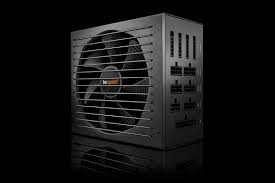The power supply unit converts the AC mains to a low-voltage regulated DC power source for the computer's internal components. Modern personal computers use switched power sources universally. Some power supplies have a manual switch to select the input voltage, while others automatically adjust to the mains voltage. Most modern desktop power supplies comply with the ATX specification, which includes shape and voltage factor tolerances. While the ATX power supply is connected to the main power supply, it always provides a 5-volt standby mode so that standby mode works on the computer and certain peripherals. ATX power supplies are turned on and off by a signal from the motherboard. They also give a signal to the motherboard to show when the DC voltages are in the specification so that the computer can be safely turned on and started. The latest ATX PSU standard is from mid-2008. The power supply is the hardware part that provides the computer with voltage and power. The power supply ensures that each part of the computer receives a certain amount of power that it needs, since not all parts of the computer consume the same amount of electricity. Also, one of the main tasks of the power supply is to convert the mains voltage, which is in line with the voltage requirements of the hardware in the computer. It also has personal cooling. The main characteristic is its strength. Electrical power is measured in W (watts) or mathematically speaking. The biggest consumers are the graphics card, hard drive, motherboard.

